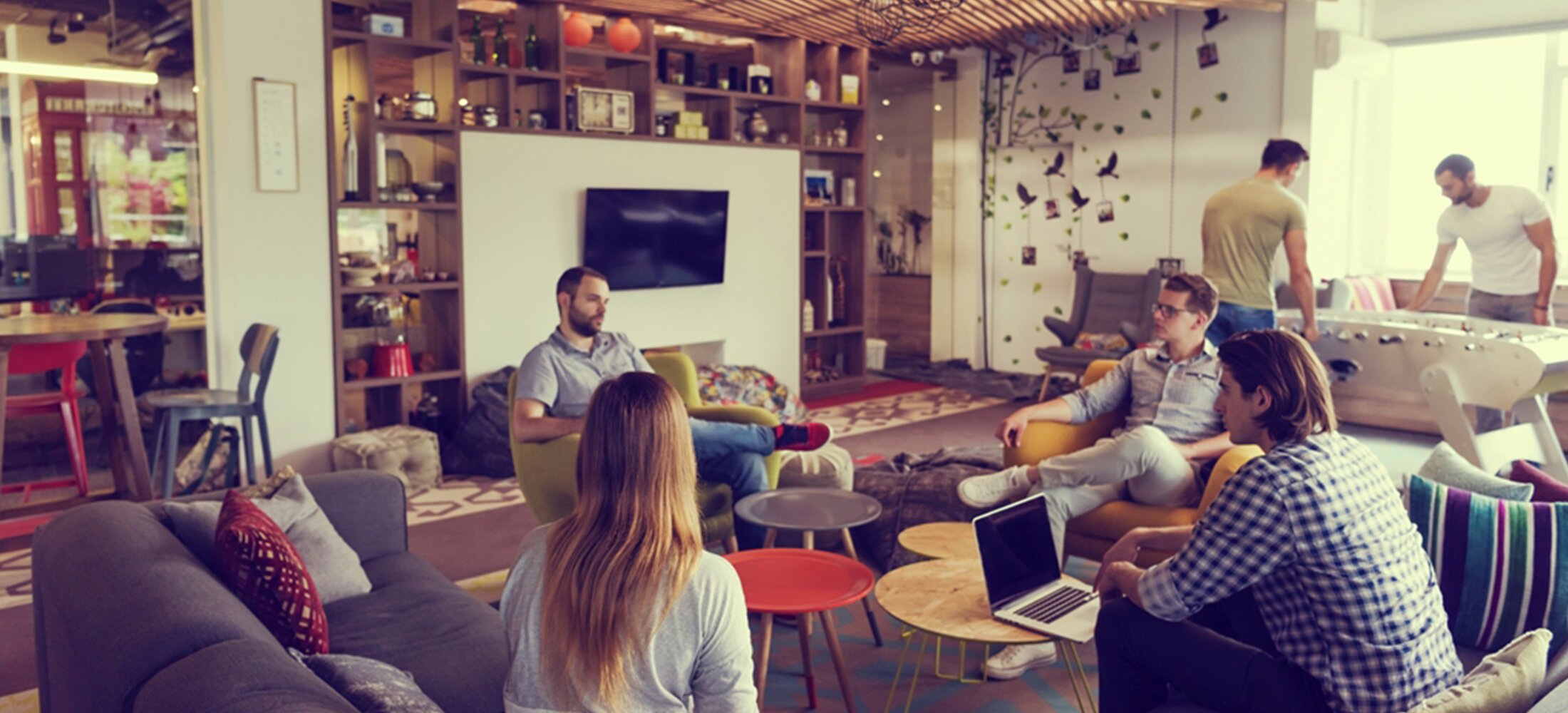在城市空間裡「看見」性別議題|“Seeing” Gender in Urban Space









不知道大家又有否留意到,在我們平日的言談中,或會用到些將特定族群與城市空間的聯繫起來的俗語。雖然這些俗語很多時都帶有貶義,但卻生動地反映了社會大衆對不同城市空間及其用家的規範,而香港人常用的俗語:「三個女人一個墟」正是一個好例子——它將性別本身、社會對特定性別的刻板印象,以及對城市空間裡的既定行爲聯繫在一起。
然而,隨著社會發展,我們的生活方式和城市空間亦會因而產生變化,使這樣的說法變得不合時宜。有見及此,吉人吉事將聚焦城市空間與性別議題,探討城市空間如何被賦予性別內涵和定型,並討論此現象對某些空間使用者的影響。我們希望能夠找到解決方案,讓所有人都能在城市中獲得更平等的城市體驗。
本月的吉人吉事,將收集世界各地的案例,看看這些富創意的空間建設策略,如何改善女孩、婦女和性別小衆群體等常被邊緣化的城市空間使用者的體驗。
我們的城市空間是性別中立的嗎?
作為城市空間的使用者,我們往往都會將某些空間與我們的情感、記憶和日常習慣與儀式聯繫起來,例如一些歷史及文化遺址、童年所居住過的舊居,或是一些神聖的宗教空間。然而,在使用者自身為空間賦予的意義背後,城市空間亦著實蘊含著其設計者為該空間訂定的意義。作為城市政策及管治的一部分,城市空間無可避免地反映,甚至鞏固了現行的社會結構,當中包括社會基於性別、年齡、宗教等對每一個人的預設期望及規範。
因此,不論是隱含在我們日常生活當中的行爲規範,又或是明文的規則及法律,這些就不同城市空間及其使用者的規範,都是現行社會結構的投射。每當我們發現有人在城市空間中被歧視、排斥、隔離,甚至被剝奪使用權時,這正正就反映了普羅社會對這些使用者的不公。這種情況常見於公共廁所及公共空間的設計、供應及使用權上,並持續深化了男女之間、順性者和跨性別者之間根深蒂固的性別不平等現象。
公共場所内的廁所如何深化傳統性別角色和性別二元論?
在性別議題中,陳規定型觀念 (Gender Stereotypes) 常常為女性冠以照顧者的身份,使她們承擔著過多照顧責任。無論是她們的孩子、家庭,甚至是社區中的老人等,她們都背負著一種源自文化、歷史的照顧者角色。這些觀念潛移默化地反映在常見的空間中——女廁所。兒童護理設施往往只設置於女厠,而男廁則不然。這種區分默示了在公共場所之中,照顧兒童責任落於女性身上而非男性,繼而強化了女性作爲照顧者的傳統性別角色。
公共場所内的廁所同時亦是明確地奠定根深蒂固的性別二元論的空間。由於厠所普遍基於性別二元而設置,往往都只提供男廁、女廁和殘疾人士廁所,令性別小衆群體特別抵抗上厠所。香港中文大學的一份研究報告指出了跨性別者在使用公共廁所、健身房和其他城市空間和設施時所面臨的困難,這些地方正是表現了城市空間在設計、管理及使用上如何被二元性別論左右,甚至著力執行及深化這些觀念。例如,跨性別者在進入廁所和健身房更衣室等私人及其他受二元性別所限的空間時,可能會面臨其他使用者不友好的對待,甚至敵對的態度。這種情況時,除了為他們的日常生活構成極大的不便,亦逼使他們需要忍受他者的偏見,甚至是騷擾。這阻礙了非二元性別者的性別表達,同時也對跨性別者構成了極大不便,大大限制了他們能平等使用公共設施和空間的權利。
很多時候,跨性別者遇到的日常障礙,來自於他們的外表或與身份證和其他個人文件上的生理性別不相符。對於跨性別者而言,這種身份角力,促成了他們使用只有男、女二元性別的廁所時感到不安,甚至是被排斥和歧視,而這種負面使用體驗的影響也是顯而易見的。由於他們會擔心或害怕自己的性別表現,會遭人拒絕或被人歧視,而使無法安心地使用公共設施,許多人會選擇避免、抗拒及推遲使用公共廁所,或重新選擇到一處能讓他們感覺更安全的地方;有些人甚至會就著能否方便地去洗手間,把對廁所的需要納入他們計劃他們日常行程的考量之中,從以防止他們或有可能面臨的性騷擾問題。
為什麼女性在公共空間的代表性如此不足?
除了公共廁所之外,女性和性別小衆群體遇到的另一個明顯的問題就是他們在公共空間的代表性不足。
現今社會主流的性別角色規範了不同人在公共空間的應有表現。而這些根深蒂固的規範無可避免地影響了青年人使用城市空間的方式和觀念。事實上,從維也納市委託的一份報告中發現,女孩子從10至13歲左右,就開始停止使用公園和公共空間,以符合社會對於女孩應該顧家的期望。然而男孩則普遍被社會允許繼續進行戶外的體育活動。 這項發現與一所來自北歐的建築事務所White Arkitekter的研究結果一致:女孩從8歲開始,在公共場所能感受到的的安全感比男孩低10倍。因此,年輕男性往往在使用公共空間,如公園及籃球場、滑板場和健身房等運動空間時亦更常佔據主導地位和角色。 在這些空間男女差別十分明顯,使許多女孩和婦女感到不安全和害怕,從而扼殺了女性使用這些空間的機會,更強化了女孩應該留在室內和被動的性別定型觀念。
即使在治安良好的發達城市,婦女仍然受到不安全感拘束。例如,在英國,有4成11至21歲的年輕女性在離家時感到不安全,並因而避免單獨活動。 這項研究還發現,在沒有足夠照明的公園、公共場所以及公共廁所等地方,女性更容易感到不安全。
女性和性別小衆群體在公共交通中又面臨著哪些困難?
儘管公共交通早已成爲各大城市的重要樞紐,每天服務不同性別和年齡的用家,但研究指出,與男性相比之下,婦女和性別小衆群體在使用交通工具時的體驗負面得多。尤其是厭女、仇視跨性別者的行為,以及在安全層面、使用權利和可負擔性等問題上所面對的種種困難和阻礙,均不利於他們日常的出行體驗。例如,歐盟基本權利機構(European Union Agency for Fundamental Rights, FRA)的一份權威報告指出,歐盟有高達55%的婦女在公共交通中遇到過性騷擾。 亦有研究表明,針對LGBT人群(女同性戀者、男同性戀者、雙性戀者與跨性別者)的仇恨犯罪亦不成比例地發生在公共場所中,如街道、停車場或公共交通等,反映出城市空間與性別不平等問題息息相關,同時重申每一個人都應該有平等而又感到安全地使用這些設施的權利。 另一項研究亦剖析了一些驚人結果,在美國俄勒岡州波特蘭市 (Portland),7500多名跨性別受訪者中,22%的人指出他們曾在公共巴士、火車和的士上受到騷擾或不尊重對待,4%的人報告說受到人身攻擊,9%的人說被拒絕平等對待。
這導致女性和性別少數群體由於認為有風險而不願意使用公共交通,一些人甚至可能被威嚇得不敢獨自出門。最終,與男性和順性者使用者相比,他們在公共設施和城市空間的使用權受因而受到了限制。
我們的城市空間是如何變得如此性別化的?
值得深思的是,不是每個人都能平等地享受城市空間和設施的根本原因。其中一個可能的原因是建築師、景觀設計師和城市規劃師——這些塑造我們周遭環境並決定我們如何生活、工作、娛樂、活動和休息的專業人士——大多是男性。在香港,女性僅佔香港建築師協會會員的29% 。因此,城市設計和規劃的本質便自然地反映了男性的觀點出發,並以這種男性視覺在城市設計上回應他者的需求。
然而,隨著社會對城市規劃中的性別主流化的實踐有了更深的認識和支持,我們都可以見到香港和其他城市的,明顯進步和努力,並鼓勵各領域的持分者對性別議題更包容,讓每一個人,不論是年輕人和老年人,都能在沒有歧視或排斥的情況下,平等地享受多元化的城市生活與權利。不過,我們確實還能更進一步。在下一篇文章中,吉人吉事將深入研究性別化的城市空間之背後成因。
There are many colourful but unsavoury terms associating groups of people with the character of public spaces. An endearing saying in Hong Kong is “Three women a market” (三個女人一個墟), associating gender, stereotypical behaviour, and appropriate conduct in an urban space, or the lack thereof.
Societal changes however often mean urban spaces and lifestyles undergo changes as well, making such sayings outdated and inappropriate. Nonetheless, GUTS is interested in how urban spaces acquire connotations of gendered use and why places feel hostile or uncomfortable for some people. Can we find solutions that enable comparable urban experience for all?
This month’s GUTS will gather case studies from around the world, all demonstrating imaginative and effective placemaking strategies to improve the well-being of girls, women and gender minorities, who are often marginalised users of urban spaces.
Are Urban Spaces Neutral?
As users of urban spaces, we often find ourselves associating certain places with our emotions, memories, and rituals. Common examples include heritage sites, childhood homes, and sacred spaces. On deeper reflection, we also realise urban spaces are embedded with meanings from their creators as well. As part of a city governed by policies and management systems, they inevitably reflect and reinforce prevailing social structures, which includes the society’s expectations of individuals based on their gender, age, religion, and other forms of societal affiliations.
As such, implicit “norms” or explicit “rules” are spatialised in urban spaces, where individuals and communities could be ostracised, segregated, or even outright banned from using them. For example, inadequacy in the provision, access, and usage of common urban spaces, such as public toilets, public open spaces for women and gender minorities not only reflect, but also perpetuate the deep-rooted gender inequalities between men and women, cis-gender and transgender people.
How do public toilets reinforce traditional gender roles and gender binary?
Gender stereotypes often delineate women taking on a disproportionate amount of caregiving responsibilities, be it for their children or the elderly in their families and wider communities. One of the most common spatial manifestations of this stereotype is the provision of child-care facilities in female toilets, but not in male toilets. This tacitly delineates the responsibility of looking after children’s needs in public spaces to women, thereby reinforcing traditional gender roles.
Another form of entrenched gender segregation that appears in toilets is the provision of male, female, and handicapped toilets. This means public toilet experiences are particularly confrontational to gender minorities. A research report from the Chinese University of Hong Kong (CUHK) pointed out the difficulties transgendered people face when using public toilets, gyms and other urban spaces where conventions on binary gender are implicitly or tacitly enforced. For example, transgendered people may face unfriendly or even hostile perceptions from other users when they enter private gendered spaces such as toilets and gym changing rooms. Some might even face inconveniences, prejudices, and even harassment in their daily lives as a result. This discourages queer gender expressions and imposes great inconvenience to transgender people, curtailing their equal access to public amenities.
Oftentimes, the daily obstacles transgendered individuals encounter arise from their appearances not corresponding to the biological sex reflected on their identity cards and other documents. Such tension is evident in their confronting experiences around public bathrooms. For fear of being denied or discriminated from using public amenities due to their perceived gender presentation, many would avoid or delay bathroom use to somewhere that felt more safe; some would even plan their travel around perceived bathroom access to prevent sexual harassment.
Why are girls and women underrepresented in public open spaces?
Apart from the public toilet, another prominent example of struggles encountered by both women and gender minorities, is the underrepresentation of women and gender minorities in public open spaces.
Entrenched gender roles and social influences on appropriate public behaviour affect how young adults utilise urban spaces. In fact, a report commissioned by the City of Vienna found girls tended to withdraw entirely from parks and public open spaces beginning from around age 10 to 13, conforming to societal expectations for girls to retreat into the domestic realm while boys are allowed to be physically active. [3] This coheres with the findings of White Arkitekter, a Scandinavian architecture practice, where girls feel 10 times less safe in public spaces than boys starting from the age of eight. As a result, young men tend to dominate the use of public open spaces like parks, and active spaces like basketball courts, skateparks, and exercise gyms. The visible male-female divide in these spaces has made many girls and women feel insecure and intimidated, which further deters them from using these spaces, thus reinforcing the gender stereotypes that girls are meant to stay indoors and passive.
Even in developed metropolises with effective crime deterrence and a high degree of civility, women are still inhibited by a sense of insecurity. For example, in the UK, 40% of young women aged between 11 and 21 feel unsafe when they leave the home and avoid doing activities alone.It was also found that women are more likely to feel unsafe in places such as parks and public spaces without sufficient lighting and in public restrooms.
What difficulties do women and gender minorities face on public transport?
Even though public transport is ubiquitous in cities and used by all genders and ages, studies have pointed out women, and gender minorities have substantially less favourable transportation encounters compared to working men. Misogynistic, transphobic behaviour and issues of safety, access, and affordability affect one’s public transport experience adversely. For example, An authoritative report from the European Union Agency for Fundamental Rights (FRA) observed how up to 55% of women within the European Union had experienced sexual harassment in public transport. Research also suggests hate crimes against LGBT people disproportionately occur in public amenities, such as streets, car parks, or public transport, which everyone should have equal access to and feel safe in. Shocking results from another study revealed out of more than 7,500 transgender respondents in Portland Oregon, 22% reported harassment or disrespect, 4% reported being physically assaulted, and 9% reported being denied equal treatment on buses, trains, and taxis.
This led women and gender minorities to feel less inclined to use public transport due to perceived risk. Some might even be deterred from heading out alone. Ultimately, their access to public amenities and urban spaces are curtailed compared to male and cis-gendered users.
How did our urban spaces become gendered?
It is worth pondering the root cause why not everyone enjoys equal access to urban spaces and amenities. One possible cause is how architects, landscape architects, and urban planners – the professionals who shape the environment around us and determine how we live, work, play, move, and rest – are more likely to be men. In Hong Kong, women make up only 29 per cent of the Hong Kong Institute of Architects’ membership. As such, urban design and planning inherently reflect the views of working men, and respond to others’ needs based on such a perspective.
However with greater awareness and support for gender mainstreaming practices in urban planning, there are visible efforts in Hong Kong and other cities to encourage greater gender inclusion across all sectors, and enable everyone young and old to enjoy the same access and amenities of urban life without discrimination or exclusion. However, more could be done. In the next article, GUTS will conduct a deep dive into how urban spaces become gendered.
你可能對以下吉人吉事有興趣:
You may also be interested in these GUTS Stories:
















